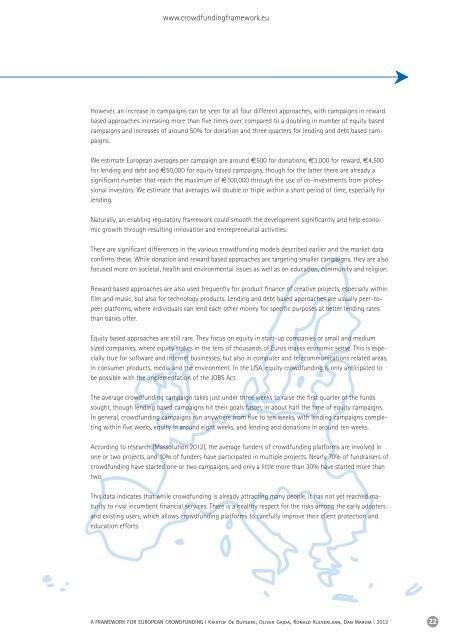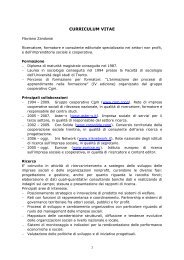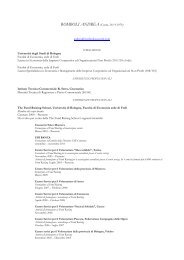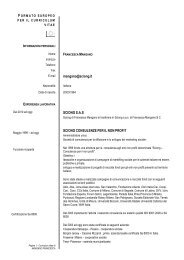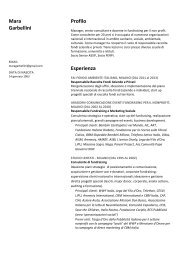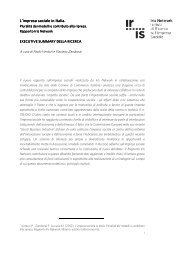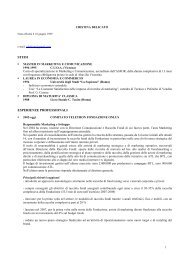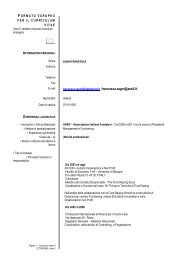A Framework for European Crowdfunding
A Framework for European Crowdfunding
A Framework for European Crowdfunding
You also want an ePaper? Increase the reach of your titles
YUMPU automatically turns print PDFs into web optimized ePapers that Google loves.
www.crowdfundingframework.eu<br />
However, an increase in campaigns can be seen <strong>for</strong> all four different approaches, with campaigns in reward<br />
based approaches increasing more than five times over, compared to a doubling in number of equity based<br />
campaigns and increases of around 50% <strong>for</strong> donation and three quarters <strong>for</strong> lending and debt based campaigns.<br />
We estimate <strong>European</strong> averages per campaign are around €500 <strong>for</strong> donations, €3,000 <strong>for</strong> reward, €4,500<br />
<strong>for</strong> lending and debt and €50,000 <strong>for</strong> equity based campaigns, though <strong>for</strong> the latter there are already a<br />
significant number that reach the maximum of €100,000 through the use of co-investments from professional<br />
investors. We estimate that averages will double or triple within a short period of time, especially <strong>for</strong><br />
lending.<br />
Naturally, an enabling regulatory framework could smooth the development significantly and help economic<br />
growth through resulting innovation and entrepreneurial activities.<br />
There are significant differences in the various crowdfunding models described earlier and the market data<br />
confirms these. While donation and reward based approaches are targeting smaller campaigns, they are also<br />
focused more on societal, health and environmental issues as well as on education, community and religion.<br />
Reward based approaches are also used frequently <strong>for</strong> product finance of creative projects, especially within<br />
film and music, but also <strong>for</strong> technology products. Lending and debt based approaches are usually peer-topeer<br />
plat<strong>for</strong>ms, where individuals can lend each other money <strong>for</strong> specific purposes at better lending rates<br />
than banks offer.<br />
Equity based approaches are still rare. They focus on equity in start-up companies or small and medium<br />
sized companies, where equity stakes in the tens of thousands of Euros makes economic sense. This is especially<br />
true <strong>for</strong> software and internet businesses, but also in computer and telecommunications related areas,<br />
in consumer products, media and the environment. In the USA, equity crowdfunding is only anticipated to<br />
be possible with the implementation of the JOBS Act.<br />
The average crowdfunding campaign takes just under three weeks to raise the first quarter of the funds<br />
sought, though lending based campaigns hit their goals faster, in about half the time of equity campaigns.<br />
In general, crowdfunding campaigns run anywhere from five to ten weeks, with lending campaigns completing<br />
within five weeks, equity in around eight weeks, and lending and donations in around ten weeks.<br />
According to research (Massolution 2012), the average funders of crowdfunding plat<strong>for</strong>ms are involved in<br />
one or two projects, and 10% of funders have participated in multiple projects. Nearly 70% of fundraisers of<br />
crowdfunding have started one or two campaigns, and only a little more than 30% have started more than<br />
two.<br />
This data indicates that while crowdfunding is already attracting many people, it has not yet reached maturity<br />
to rival incumbent financial services. There is a healthy respect <strong>for</strong> the risks among the early adopters<br />
and existing users, which allows crowdfunding plat<strong>for</strong>ms to carefully improve their client protection and<br />
education ef<strong>for</strong>ts.<br />
A FRAMEWORK FOR EUROPEAN CROWDFUNDING | Kristof De Buysere, Oliver Gajda, Ronald Kleverlaan, Dan Marom | 2012<br />
22


